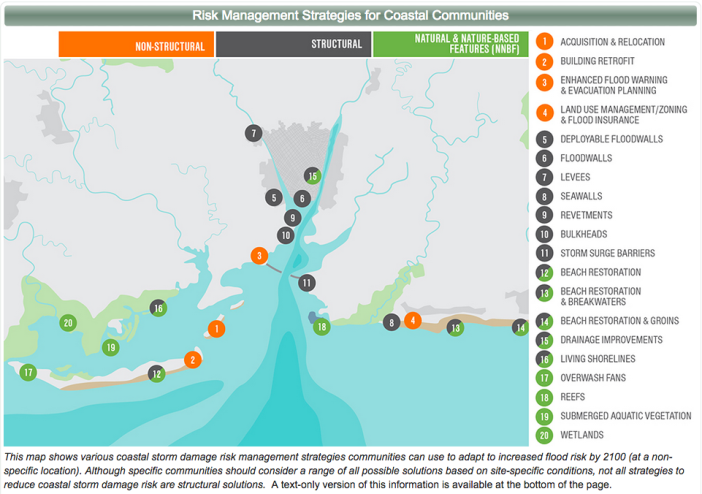Preparing For 2100: Two Studies Look At Immediate Impact Of Climate Change On New York City


Two new studies paint a somewhat grim portrait of New York City in 100 years from now, with one projecting various extreme weather events by 2100 and another breaking down the best ways to adapt to those events.
A new study released by Mayor Bill de Blasio’s office predicts and increasing number of record-breaking, extreme weather events in New York City in our lifetimes – that is, within the next 50-100 years. These events include heat waves, brief and intense rainstorms, flooding, and increasingly severe end-of-summer droughts that “may challenge even a great city like New York’s adaptive capacity.”
The study recommends immediate reduction of Green House Gas emissions as well as further research into the impact of these projected weather changes on a neighborhood-by-neighborhood basis.
Spoiler: Southern Brooklyn is likely to get hit pretty hard. Here’s a map of the city’s creeping flood zones over the next 100 years:

Meanwhile, a long-awaited $19.5 million comprehensive report released by the U.S. Army Corps of Engineers has given a thumbs down the once-popular idea of installing barriers around coastal communities to prevent flooding, citing expense and ineffectiveness of adapting to rising sea levels.
In the immediate aftermath of Superstorm Sandy, elected officials called for massive gates to be installed along the New York Harbor that could be shuttered in the event of another major storm.
The gates – which have been installed in places like the Netherlands, Russia and Road Island, according to WNYC – are no longer recommended as a strategy to prepare for flood waters in 2100.
The multi-volume study analyzes various hard engineering and green/natural solutions to see which are most and least effective at adapting increasing flood risks.

Matthew Shueman at WNYC paraphrased the study, which focuses on the entire Northeast coast, this way:
It did not address the harbor-wide, storm-surge barrier explicitly, but in a matrix it gave gates low marks for their ability to adapt to sea level change (e.g. to grow higher over time). It also said barriers do not do anything to help with erosion, and have few ancillary benefits, such as developing fish and wildlife.
By contrast, even though the Army Corps is often criticized for favoring hard engineering over natural solutions, the report gave favorable mention to strategies such as oyster beds and wetlands restoration.
Still, the study’s recommendations are not set in stone and in a few cases, such as at the entrance of the Gowanus Canal, gates may still be recommended.
“There is no magical silver bullet,” said Joe Vietri, the planning and policy chief for the Army Corps’s North Atlantic Division told the radio outlet. “None of them by themselves are really the correct answer. It’s really a combination of things. And depending on where you are, the combination of things may shift.”



